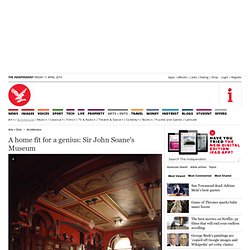

KnightCite Citation Service. RefWorks. Around the World with RefWorks RefWorks has created language-specific sites to assist our end-users around the world with localized support and training documentation.

The sites provide a variety of material developed by RefWorks as well as by subscribing organizations who have graciously agreed to share their resources. The types of materials found on these sites will vary to include such items as Quick Start Guides, tutorials, help documentation and our webinar schedule. Our International sites helps you get the most out of RefWorks. Wherever you are - get assistance with RefWorks easily and instantly! General Information RefWorks Fact Sheet User Aides RefWorks Quick Start GuideRefWorks Fundamentals Workbook. HELP Documentation Modifying an Output Style. Webinars. Le Corbusier Foundation - Useful Information. Lincoln's Inn Fields - No. 13 (Sir John Soane's Museum) Ground landlords.

Trustees of Sir John Soane's Museum. Description and date of structure. The original houses from No. 13 onwards on the north side of Lincoln's Inn Fields were built in accordance with the agreement come to in 1657 between the Society of Lincoln's Inn and Sir William Cowper, Robert Henley and James Cowper. (fn. 1) Faithorne and Newcourt's map (Plate 4), dated 1658, shows the houses as completed, and they may, therefore, be assigned to that year. The house is thus described in a deed of 1737 (fn. 2) :—"That messuage scituate in the North Row, called Holborn Row or Turnstile Row, in the north part of Cupfield in St. From the above it is evident that this was the house known as "The Pineapples" in the days before the numbering of Lincoln's Inn Fields, in the same way as No. 44 on the south side was known as "The Two Black Griffins. " The house was rebuilt in 1753 after the occupation of Sir Thomas Burnet.
Plate 14 shows the dining room and library. Condition of repair. Julian Harrap Architects. A home fit for a genius: Sir John Soane's Museum - Architecture - Arts & Entertainment. The answer: Sir John Soane's Museum in Lincoln's Inn Fields, the world's most brilliant conflation of domestic and curatorial spaces.

To enter Soane's masterpiece, whose £7m restoration scheme will be announced today, is to walk straight into the mind of a genius. The public – or "amateurs and students" as Soane described them – have been doing just that since soon after his death in 1837. He established his house as a public museum via an Act of Parliament in 1833 that stipulated that the three buildings that made it up be kept "as nearly as possible in the state in which he shall leave it". In his lifetime, Soane's reputation as an architect was high, but not ethereally so. His works included Pitzhanger Manor in Ealing, the dining rooms of 10 and 11 Downing Street, country houses, churches, and two buildings of particular importance: Dulwich Picture Gallery, and the Bank of England. Sir John Soane's Museum, 3 interiors (London) « Caruso St John Architects.
2009–2012Location: London, GBClient: Sir John Soane's MuseumProject Status: Built The interiors of Sir John Soane’s Museum are characterised by an enormous and engaging variety made up of objects, furniture and space.

Soane’s genius is as much about a splendid organisation of light and space, as it is about a connoisseur’s eye for precious objects and an ability to bring seemingly disparate things together. We are working within the restored interiors of four rooms in No 12 Lincoln’s Inn Fields to make new exhibition galleries, a new interpretation gallery, entrance facilities and a shop. This work is intended to provide a seamless mediation between drawings, objects, interpretation, merchandise and the ‘room’. The furniture, cabinets and linings required to ‘furnish’ these rooms are intended to be brought into a balance with their specific positions within the narrative of the Museum, with the material detail of the restored rooms, and finally with their use.